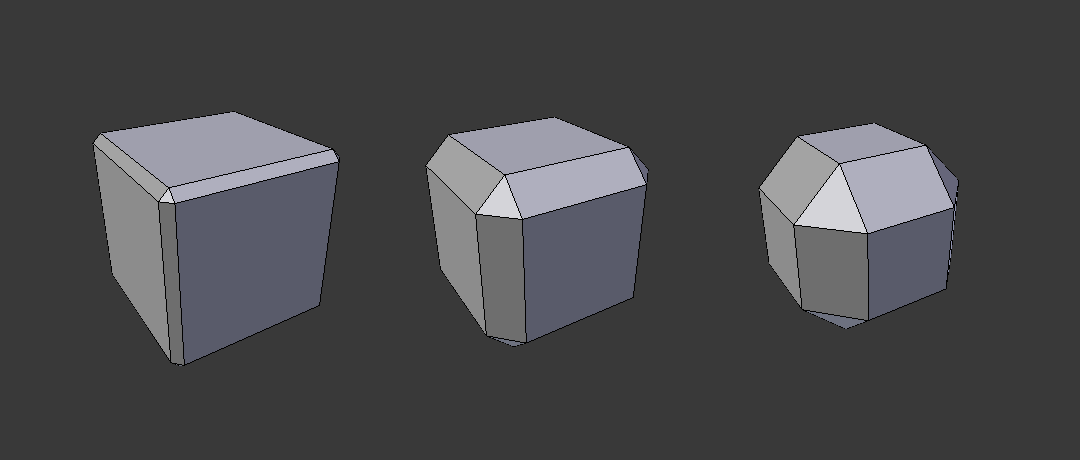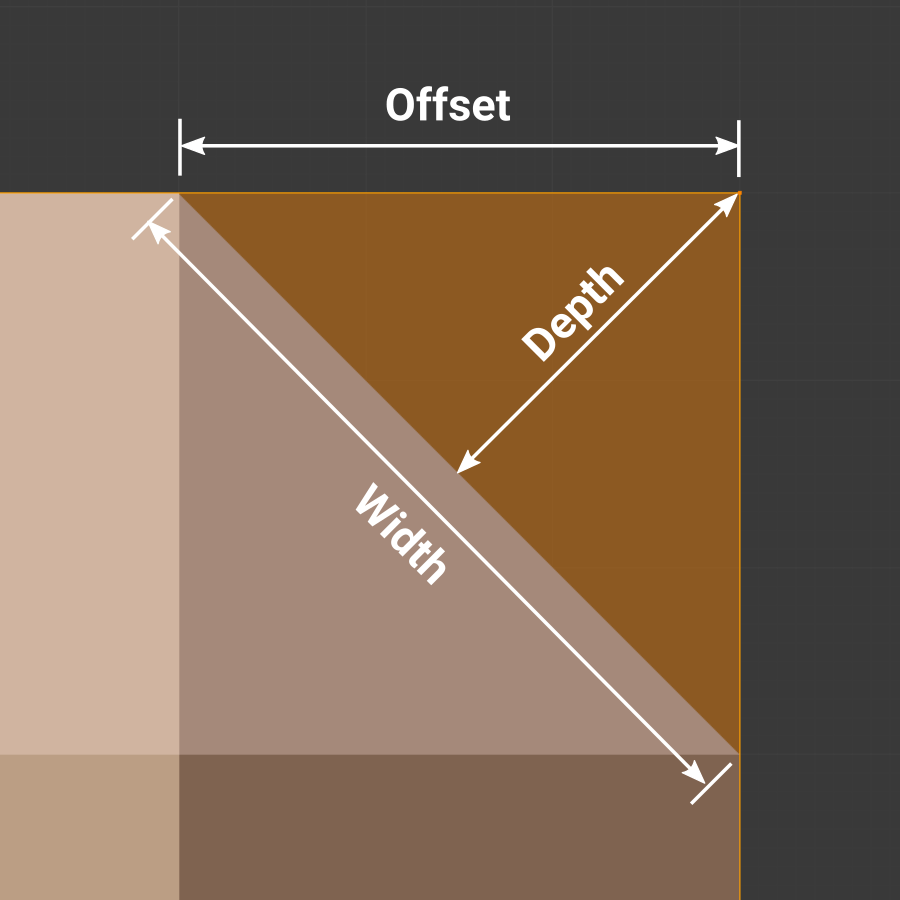Bevel Modifier 倒角修改器¶
The Bevel modifier bevels the edges of the mesh it is applied to, with some control of how and where the bevel is applied to the mesh.
It is a non-destructive alternative to the Bevel Operation in Edit Mode.
選項¶

The Bevel modifier.
- 寬度
The size of the bevel effect. See Width Method below.
- 段
- 沿著倒角的麵所添加邊環的數量
- 外形
- 倒角的形狀,從凹到凸——如果 段 少於
2則無效果。 - 材料
- 用來倒角的材質槽的索引。當設置為
-1時,將採用最靠近原始面的材質。 - 僅頂點
When enabled, only the areas near vertices are beveled, the edges remain unchanged.
- 夾鉗重疊
- Limits the width of each beveled edge so that edges cannot cause overlapping intersections with other geometry.
- Loop Slide
- If there are unbeveled edges along with beveled edges into a vertex, the bevel tries to slide along those edges when possible. Turning the option off can lead to more even bevel widths.
- Mark Seams
- If a seam edge crosses a non-seam one and you bevel all of them, this option will maintain the expected propagation of seams.
- Mark Sharp
- Similar to Mark Seams, but for sharp edges.
- Harden Normals
- When enabled, the per-vertex face normals of the bevel faces are adjusted to match the surrounding faces, and the normals of the surrounding faces are not affected. This will keep the surrounding faces flat (if they were before), with the bevel faces shading smoothly into them. For this effect to work, you need custom normals data, which requires Auto Smooth option to be enabled (see Normals).
- 限制方法
用來控制倒角應用到網面哪裡。
- 寬度方法
說明倒角的量如何以寬度來定義
- 偏移量(Offset)
- 其值是從原始邊線到倒角面的垂直距離。
- 寬度
- 其值代表由倒角兩旁邊線之間的距離。
- 深度值(Depth)
- 其值是從原始邊線到新的倒角面之間的垂直距離。
- 百分比值(Percent)
- 和偏移量接近,但是其值代表調整邊線長度後的百分比值。
- Set Face Strength Mode
Set Face Strength on the faces involved in the bevel, according to the mode specified here. This can be used in conjunction with a following Weighted Normals modifier (with the Face Influence option checked).
- 無
- Do not set face strength.
- New
- Set the face strength of new faces along edges to Medium, and the face strength of new faces at vertices to Weak.
- Affected
- In addition to those set for the New case, also set the faces adjacent to new faces to have strength Strong.
- All
- In addition to those set for the Affected case, also set all the rest of the faces of the model to have strength Strong.
- Miter Patterns
A miter is formed when two beveled edges meet at an angle. On the side where the angle is greater than 180 degrees, if any, it is called an outer miter. If it is less than 180 degrees, then it is called an inner miter. The outer and inner miters can each be set to one of these patterns:
- Sharp
- Edges meet at a sharp point, with no extra vertices introduced on the edges.
- Patch
Edges meet at a sharp point but in addition, two extra vertices are introduced near the point so that the edges and faces at the vertex may be less pinched together than what occurs in the Sharp case. This pattern does makes no sense for inner miters, so it behaves like Arc for them.
The Spread slider controls how far the new vertices are from the meeting point.
- Arc
Two vertices are introduced near the meeting point, and a curved arc joins them together.
The Spread slider controls how far the new vertices are from the meeting point.
The Profile slider controls the shape of the arc.
Diagrams of the miter patterns.¶ 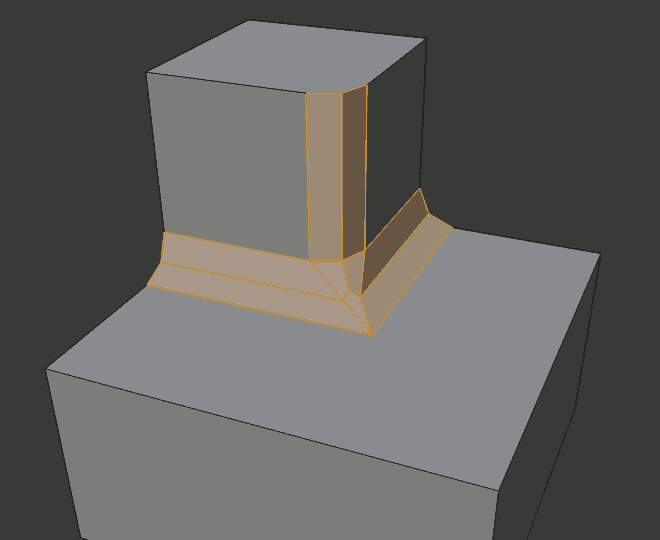
Sharp outer miter.

Patch outer miter.
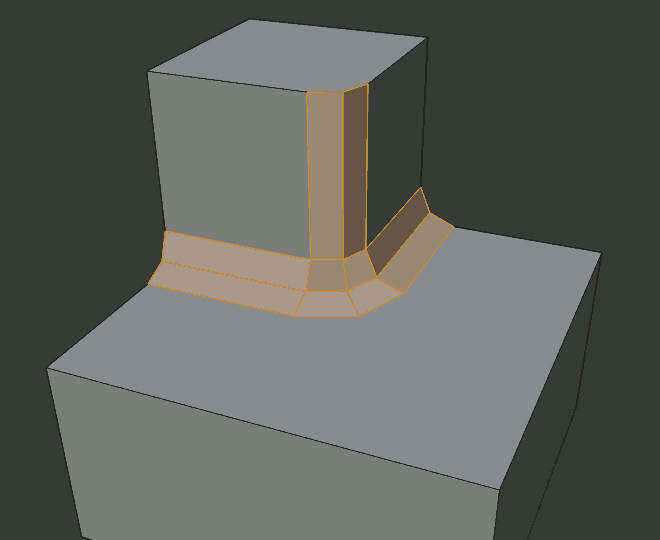
Arc outer miter.

Sharp inner miter.

Arc inner miter.
- Spread
- The value used to spread extra vertices apart for non-sharp miters.

